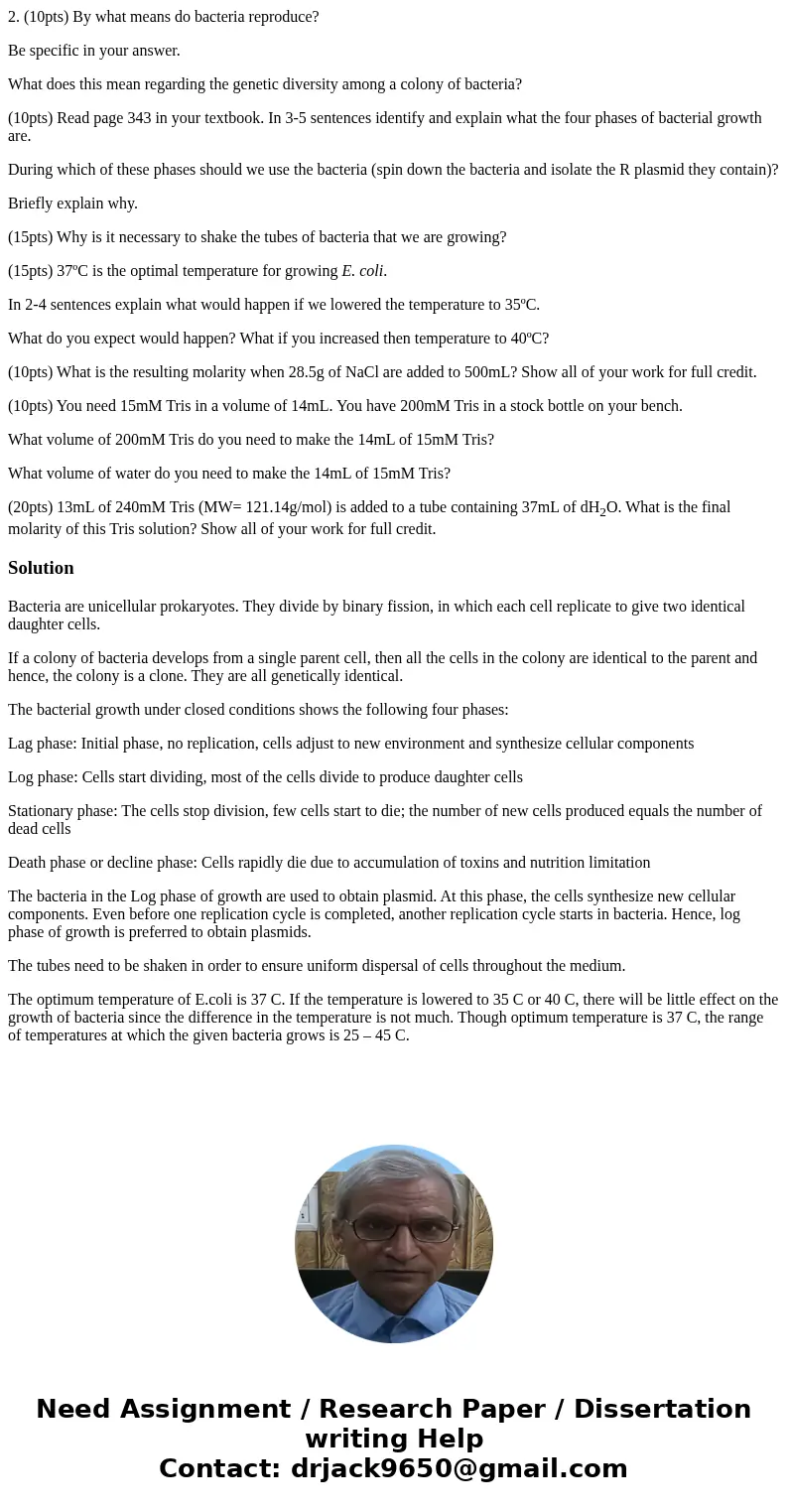2 10pts By what means do bacteria reproduce Be specific in y
2. (10pts) By what means do bacteria reproduce?
Be specific in your answer.
What does this mean regarding the genetic diversity among a colony of bacteria?
(10pts) Read page 343 in your textbook. In 3-5 sentences identify and explain what the four phases of bacterial growth are.
During which of these phases should we use the bacteria (spin down the bacteria and isolate the R plasmid they contain)?
Briefly explain why.
(15pts) Why is it necessary to shake the tubes of bacteria that we are growing?
(15pts) 37ºC is the optimal temperature for growing E. coli.
In 2-4 sentences explain what would happen if we lowered the temperature to 35ºC.
What do you expect would happen? What if you increased then temperature to 40ºC?
(10pts) What is the resulting molarity when 28.5g of NaCl are added to 500mL? Show all of your work for full credit.
(10pts) You need 15mM Tris in a volume of 14mL. You have 200mM Tris in a stock bottle on your bench.
What volume of 200mM Tris do you need to make the 14mL of 15mM Tris?
What volume of water do you need to make the 14mL of 15mM Tris?
(20pts) 13mL of 240mM Tris (MW= 121.14g/mol) is added to a tube containing 37mL of dH2O. What is the final molarity of this Tris solution? Show all of your work for full credit.
Solution
Bacteria are unicellular prokaryotes. They divide by binary fission, in which each cell replicate to give two identical daughter cells.
If a colony of bacteria develops from a single parent cell, then all the cells in the colony are identical to the parent and hence, the colony is a clone. They are all genetically identical.
The bacterial growth under closed conditions shows the following four phases:
Lag phase: Initial phase, no replication, cells adjust to new environment and synthesize cellular components
Log phase: Cells start dividing, most of the cells divide to produce daughter cells
Stationary phase: The cells stop division, few cells start to die; the number of new cells produced equals the number of dead cells
Death phase or decline phase: Cells rapidly die due to accumulation of toxins and nutrition limitation
The bacteria in the Log phase of growth are used to obtain plasmid. At this phase, the cells synthesize new cellular components. Even before one replication cycle is completed, another replication cycle starts in bacteria. Hence, log phase of growth is preferred to obtain plasmids.
The tubes need to be shaken in order to ensure uniform dispersal of cells throughout the medium.
The optimum temperature of E.coli is 37 C. If the temperature is lowered to 35 C or 40 C, there will be little effect on the growth of bacteria since the difference in the temperature is not much. Though optimum temperature is 37 C, the range of temperatures at which the given bacteria grows is 25 – 45 C.

 Homework Sourse
Homework Sourse